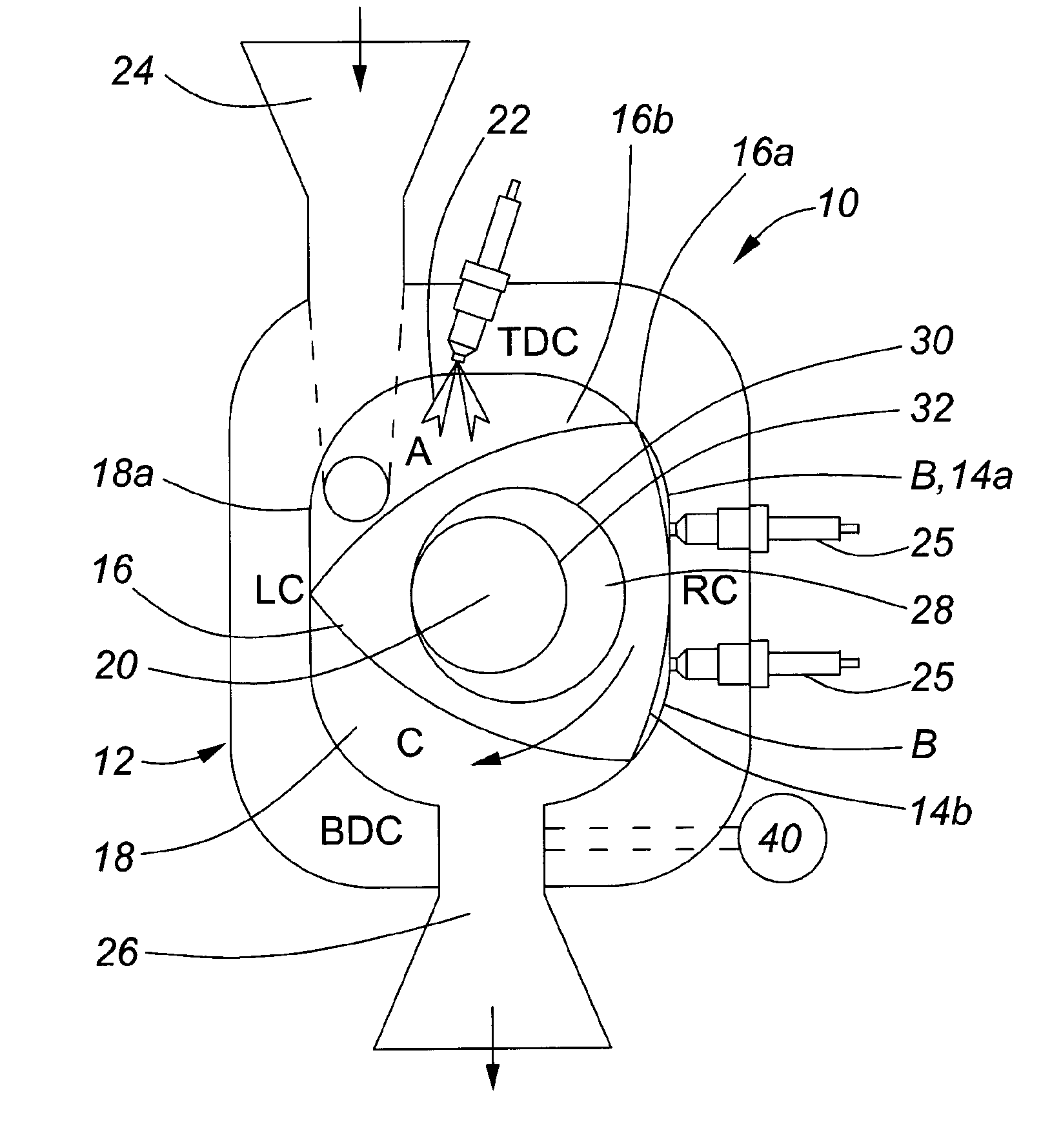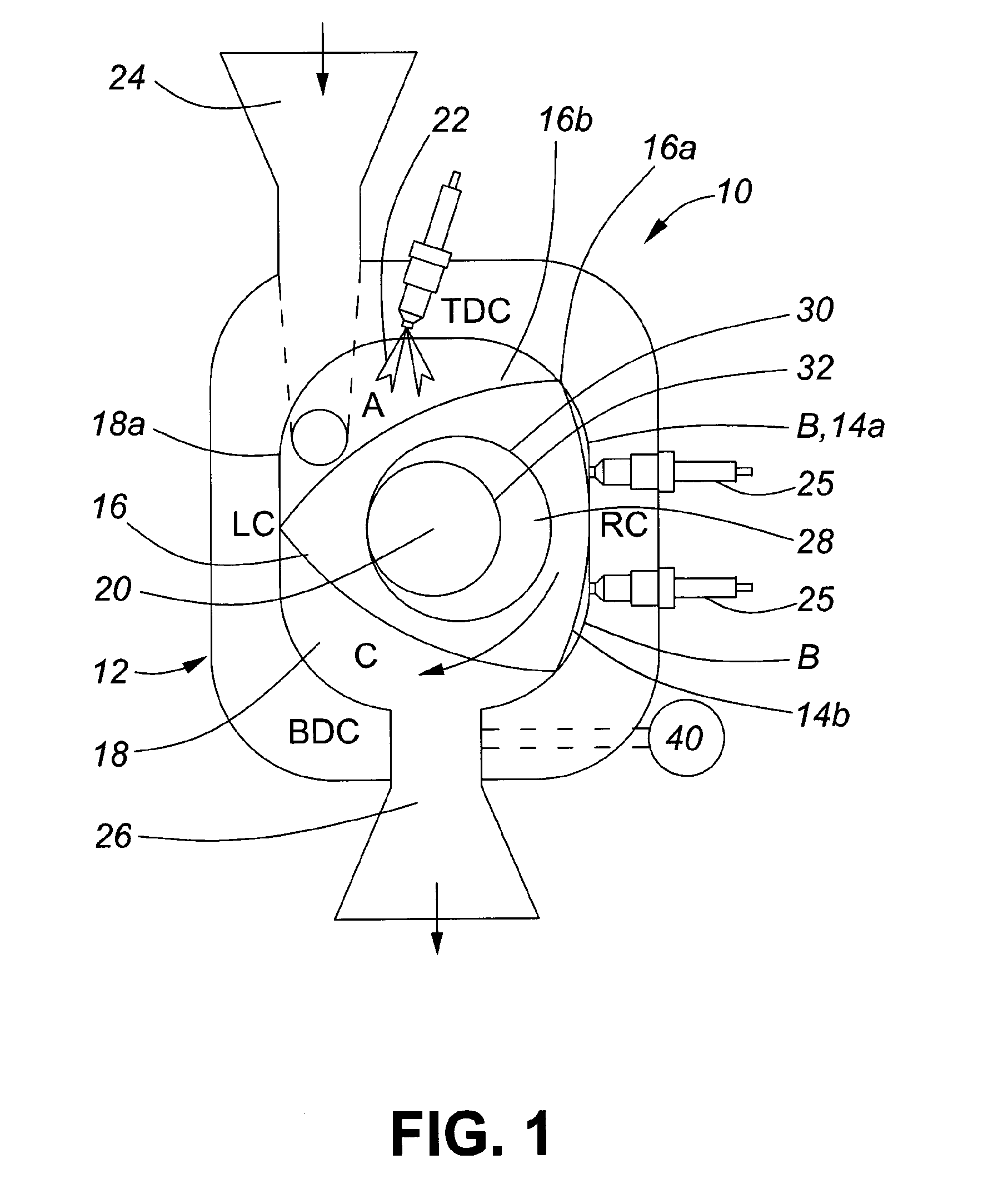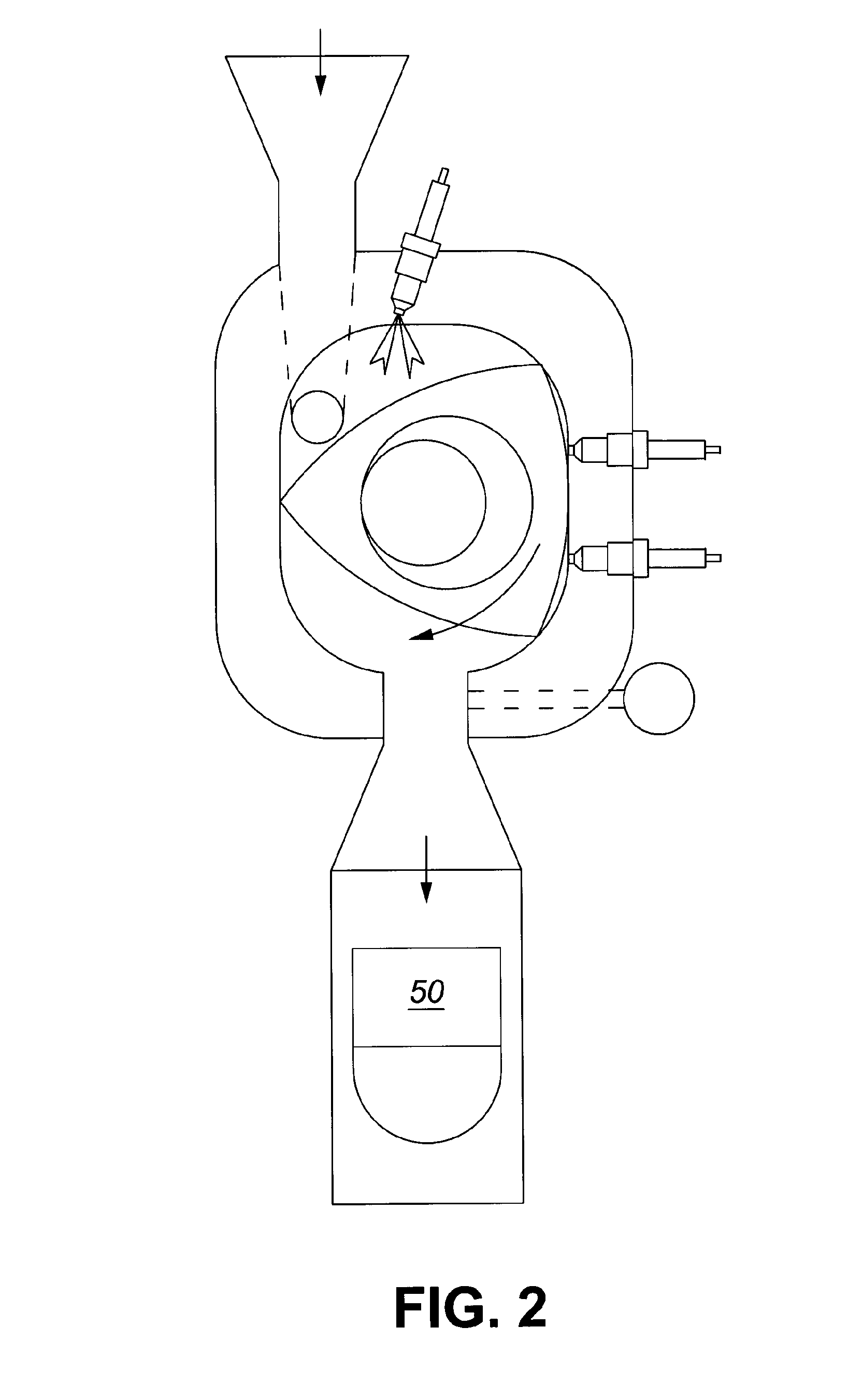Rotary pulse detonation engine
- Summary
- Abstract
- Description
- Claims
- Application Information
AI Technical Summary
Benefits of technology
Problems solved by technology
Method used
Image
Examples
Embodiment Construction
[0033]With reference to the figures, a pulse detonation engine (PDE) is described having a rotating valve for high temperature and high pressure operation in a pulse detonation combustor.
[0034]As shown in FIG. 1, the PDE 10 utilizes a rotary valve 12 and combustion chamber 14a, 14b of a Wankel-type rotary engine as the means for generating pulsed detonations of pressurized fuel / air.
[0035]More specifically, as is known, a Wankel-type engine is a variable volume processing cavity system in which a lobed rotor 16, having rotor tips 16a and rotor surfaces 16b is rotated within a generally oval chamber 18 having chamber walls 18a. As the lobed rotor is caused to rotate within the chamber about a central axis 20, the rotor tips trace the circumference of the oval chamber such that the rotor surfaces successively move towards and away from the oval chamber walls thereby defining different volumes at different locations within the chamber as the rotor progresses through a complete rotation....
PUM
 Login to View More
Login to View More Abstract
Description
Claims
Application Information
 Login to View More
Login to View More - Generate Ideas
- Intellectual Property
- Life Sciences
- Materials
- Tech Scout
- Unparalleled Data Quality
- Higher Quality Content
- 60% Fewer Hallucinations
Browse by: Latest US Patents, China's latest patents, Technical Efficacy Thesaurus, Application Domain, Technology Topic, Popular Technical Reports.
© 2025 PatSnap. All rights reserved.Legal|Privacy policy|Modern Slavery Act Transparency Statement|Sitemap|About US| Contact US: help@patsnap.com



